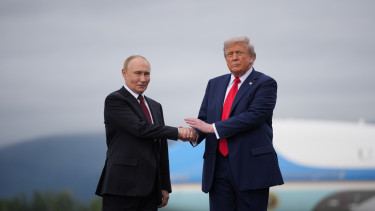COVID-19: Nearly 28,000 new cases, 460 deaths over the weekend


Given the weekend impact (authorities disclose aggregate data for Friday, Saturday and Sunday on Monday morning), the daily, 3-day and even the 7-day test positivity data should be treated with more than just a pinch of salt.
As you can see on the charts below, the 3-day / 21-day test positivity rate dipped to under 100% six times, on these three 'weekend' days and exactly a week earlier. Last week it jumped back to as high as 128% but retreated to 113% eventually before the current dip. We need to wait until Wednesday to see more meaningful changes. If we want to be certain that the key epidemiological figures are starting to improve, the 7-day average of the 3-d/21-d positivity rate would need to go south of the 100% mark. It is currently fairly steady around 106%, although well under 160% recorded in late October.


Estimating Covid fatalities
Based on the number of daily new confirmed COVID-19 cases we have presented a simple model by which we can estimate how many daily Covid deaths we could have in 20 days. The updated projections are in the table below. Note that the top section includes estimates based on 3-day averages, rather than on the daily readings (given the distortion caused by the weekend).
It is a generally accepted and proven fact worldwide that the number of COVID-19 fatalities tracks changes in the number of daily new confirmed cases with a cc. 20-day delay. The model is exceedingly simple: we divide the number of new cases reported today (for the previous day) with the number of daily cases reported 20 days earlier, and multiply this figure with the number of deaths reported today. That should be roughly the number of deaths authorities will report 20 days from now.

How can we check that this is not a bad model? Again, simple. Just take a look at the facts. How do the number of deaths 20 days ago compare with the number of deaths today? What is the multiplier in that case? Is it close to the multiplier we are using now to estimate the number of deaths 20 days ahead?
Let's see the 3-day averages first: 80 deaths on 8 November compared with 153 deaths reported for 28 November: 153 / 80 = 1.91. The multiplier used today was 1.78. With a 1.91 multiplier we would get 293 deaths (+7.44%) forecasted for 18 Dec.
Let's apply the same verification for the 7-day averages. 165 / 86 = 19.2. The multiplier used today was 1.86. With a 1.92 multiplier we would get 317 deaths (+3.0%) forecasted for 18 Dec.
Note that these are all mortality data to be reported by the official government portal. The mortality stats of the Central Statistical Office (KSH) to be published (several months) later will show a lot more deaths. Needless to say, there is no way to forecast the number of Covid deaths with pinpoint accuracy, but these forecasts should at least give us an idea of what is to come.

The tables below show how the changes in the number of daily new confirmed COVID-19 cases, hospitalisations and the number of ventilated Covid patients in 2021 and 2020. From the comparison of daily figures we have switched to lining up 7-day averages. This is to avoid distortions caused by comparing weekdays with weekend days when authorities do not publish statistics, and the aggregate data released on Mondays have to be distributed for three days with a certain methodology.
In the top chart we compared the figures of 28 November to one, two, three, and four weeks earlier. The second chart shows the week-on-week changes. The red cells make it evident that the epidemiological situation has been worsening at a more alarming rate in almost every aspect than in the base period. Note that the green cells for 2021 showing the change in the number of ventilated Covid patients has to do with the most likely faulty data authorities reported today.


Aggregate data
The number of Covid deaths per days spent in hospital by Covid patients is higher this year than in the same period of 2020. The number of those in intensive care units is also higher. Only a smaller fraction of registered cases is (can?) be taken to hospital but once they are there, a higher percentage of them dies than last year. The bottom right chart shows a higher ratio of deaths in ICUs, as well. (The average is lower, hence they last longer in ICUs / ventilators, but there are no miracles.)

Number of confirmed cases, patients hospitalised, ventilated, and deaths
All figures are higher now than a year ago, except that fewer infected people are hospitalised. More Covid patients have died, there are more in ICUs, there are more registered and active cases. Only hospitals treat fewer patients…

Aggregate data vs. daily figures --- Hospitalisations, ICUs, fatalities
About 3.5% of newly confirmed COVID-19 cases die in hospital within 12 days. More than 22% of those admitted in ICUs die within 5 days. The current ratios are worse than a year ago, and they bode ill for the accumulation of such cases and consequently for the near future.

Aggregate data vs. daily figures --- Admitted in ICU, longer-term chances of survival
About 13% of those that need hospitalisation will need intensive care. And they do not get out of there in large numbers. The daily figure exceeds the base period’s print. See the above remark. On the right-hand graph you see that over a 20-day period about 4.0% of the registered cases die. (Although there has been a decline in this data, but the daily figures are higher than the aggregate and also higher in annual terms.)

2.9 to 3.5% of registered cases die in hospital within 12 days, and another 1% of them succumb to the disease within the next eight days. Around 4.0% of those taken to hospital today will not be among the living two weeks from now. And there are those that never make it to the hospital; are officially not Covid patients, either because they have never been tested or their positive test results come back too late.

Note that these data refer only to the official statistics provided by koronavirus.gov.hu. The hospitals themselves must have even worse data, and we have no way of knowing who died at home. Only the Central Statistical Office (KSH) data will reveal full mortality data, but only months from now. (By Balázs Pártos.)
Vaccination in progress
The government launched a one-week vaccination campaign on 22 November (2.5 weeks after its announcment) where Hungarians only need to show up and take a jab, without prior online registration or booking an appointment in advance. Last week, more than 643,000 3rd doses of COVID-19 vaccines were administered, while the number of 1st doses totalled about 96,000 and nearly 45,000 Hungarians requested 2nd jabs. The results will be palpable only in the 'fifth wave' of the coronavirus pandemic, not in this one, unless we count the boosted protection (in 14-21 days) of those receiving third doses now.
Last Friday, Prime Minister Viktor Orbán announced a one-week extention of the programme.
The cabinet continues to bet on vaccination. Whereas the extension of the 'vaccination week' by seven days is welcome, seeing the success of it makes you wonder why cannot this measure be permanent? Why return to the pre-registration, appointment-booking practice at all? It has become clear that the hassle prevents a lot of Hungarians from getting their shots, and this is particularly true in the less developed regions of the country.




Cover photo: Getty Images









